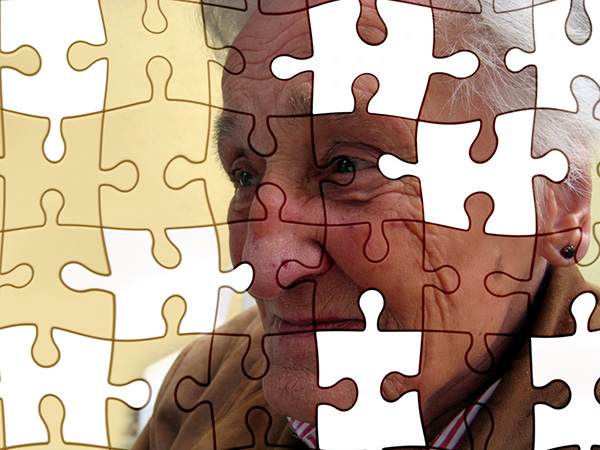Researchers headed by a team at the University of California, San Diego (UCSD), School of Medicine, have used gene therapy to prevent learning and memory loss in a mouse model of Alzheimer’s disease (AD). The results of their experiments, which involved delivering a gene called SynCav1 to the mouse brain, could represent a key step toward testing the approach in humans with the neurodegenerative disorder.
Reporting their results in Molecular Therapy-Methods & Clinical Development, the investigators, headed by Brian P. Head, PhD, adjunct professor in the department of anesthesiology at UCSD School of Medicine and research health scientist at the VA San Diego Healthcare System, stated, “Our data indicate that SynCav1 gene therapy may be an option for AD and potentially in other forms of neurodegeneration of unknown etiology.” Their paper is titled, “Synapsin-caveolin-1 gene therapy preserves neuronal and synaptic morphology and prevents neurodegeneration in a mouse model of AD.”
AD is the most common form of neurodegeneration and cognitive dysfunction in the elderly, the authors wrote. The disorder is characterized by the accumulation of clumps of misfolded proteins called amyloid plaques and neurofibrillary tau tangles, both of which impair cell signaling and promote neuronal death.
Current AD treatments targeting plaques and tangles address only symptoms, which the authors pointed out suggests that removal of toxic amyloid species alone may not be enough to reverse functional deficits in the brain. They suggest that a reversal and cure of AD will likely require a combination of interventional approaches that both decrease aggregating toxins and promote neuronal and synaptic plasticity. “Gene therapies that target neuroprotection and resilience may be an effective option to treat individuals affected with AD or other forms of neurodegeneration of different or unknown ethology.”
For their reported studies the team used an adeno-associated viral (AAv) vector to introduce synapsin-caveolin-1 cDNA (AAV-SynCav1) into the hippocampus region of three-month-old transgenic PSAPP AD mice.
PSAPP mice exhibit learning and memory deficits at 9 and 11 months, respectively. These deficits are associated with decreased expression of caveolin-1, a scaffolding protein that builds the membranes housing cellular signaling tools, such as neurotrophin receptors (NTRs) that receive the critical extracellular signals, which govern all cellular life and function. With decay and destruction of these membranes, cell dysfunction and neurodegeneration follow. Previous research has found decreased Cav-1 in AD Enron’s and other conditions. “Both preclinical and clinical findings revealed that Cav-1 and Cav-1 associated signaling complexes (NTRs and neurotransmitter receptors) were decreased in degenerating neurons in AD, chronic traumatic encephalopathy (CTE), and amyotrophic lateral sclerosis (ALS),” the authors wrote.
The researchers administered a single injection of AAV-SynCav1 to the hippocampus of PSAPP mice. The hippocampus is a complex region deep within the brain that plays a major role in learning and memory. In AD, the hippocampus is among the first areas of the brain to be impaired. “Our goal was to test whether SynCav1 gene therapy in these AD mouse models might preserve neuronal and synaptic plasticity in targeted parts of the membrane, and improve higher brain function,” Head noted.
The results confirmed that at 9- and 11-months, hippocampal learning and memory in the mice were preserved. Moreover, the researchers found, critical membrane structures and associated neurotrophin receptors also remained intact in animals that received the gene therapy. The neuroprotective effects from SynCav1 gene delivery occurred independently to reducing amyloid plaque depositions. “These findings are the first to demonstrate that a one-time hippocampal delivery of AAV-SynCav1 to PSAPP mice preserved hippocampal learning at 9 months and preserved memory at 11 months,” the investigators claimed.
The team had previously demonstrated the neuroprotective properties of SynCav1 in different in vitro and in vivo models, including ischemia, aging, traumatic injury, and in neurodegenerative mice that model a familial form of ALS, “… suggesting that Cav-1 may serve as a central neuroprotective target in a variety of neurodegenerative conditions.” They say that their newly reported study now expands on the therapeutic potential of SynCav1 to a new neurodegenerative mouse model of a familial form of AD.
“These results suggest SynCav1 gene therapy is an attractive approach to restore brain plasticity and improve brain function in AD and potentially in other forms of neurodegeneration caused by unknown etiology,” the investigators noted. They concluded that results from this and previous studies indicate that, “ … regardless of the cause of the neurodegenerative condition (known versus unknown etiology, injury versus genetic abnormality,) the therapeutic and translational potential of SynCav1 might be exploited in the future to treat sporadic neurodegenerative conditions or to be used in combination with already existing drugs or biologics designed to target known monogenic candidates linked to other neurodegenerative conditions (EOFAD, FALS, Parkinson’s, and Huntington’s diseases).”
The ability of SynCav1 to preserve axonal myelin in hippocampal neurons in the PSAPP mice further indicates the potential utility of the treatment against demyelinating diseases, including multiple sclerosis, Gillian-Barre syndrome, and Charcot-Marie-Tooth disease, the scientists noted.
Head’s laboratory is currently testing SynCav1 gene delivery in other AD models at symptomatic stages as well as in a mouse model of amyotrophic lateral sclerosis (Lou Gehrig’s disease). He hopes to advance this work to human clinical trials soon. The SynCav1 gene therapy is patented through UCSD and the Department of Veterans Affairs.


